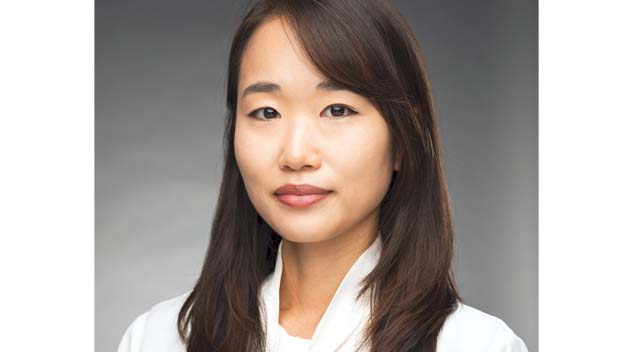
.
.
.
#DrHaelyChang #HoodMuseumOfArt #EastAsianArt #AttitudeOfCoexistence #KoreanArt #JapaneseArt #ArtExhibition #NonHumansInArt #GoldCakraLamp #FloatingMountain #ArtCurator #DartmouthCollege #ModernArt #ArtHistory #ArtAndCulture
Dr. Haely Chang: Inaugural Curator of East Asian Art at the Hood Museum of Art
Dr. Haely Chang, the inaugural Jane and Raphael Bernstein Associate Curator of East Asian Art at Dartmouth College’s Hood Museum of Art, brings a wealth of expertise in modern Korean and Japanese art to her role. With a PhD from the University of Michigan, an MA from the University of Pennsylvania, and a BA from Hongik University in Art History, Chang is well-positioned to enrich the museum’s offerings and foster deeper engagement with East Asian art. Her recent exhibition, “Attitude of Coexistence: Non-Humans in East Asian Art,” exemplifies her curatorial vision, blending historical and contemporary works to explore humanity’s relationship with the non-human world.
The Role of an Inaugural Curator
As the first person to hold this position, Chang sees her role as an opportunity to advance the Hood Museum’s commitment to diversity and inclusion. By establishing a strong stewardship of Asian art, she aims to create lasting opportunities for students, faculty, and the broader community to engage with East Asian artistic traditions. Her work not only enriches the museum’s collections but also supports academic programming, fostering a deeper understanding of Asian art and culture at Dartmouth.
“Attitude of Coexistence: Non-Humans in East Asian Art”
The exhibition “Attitude of Coexistence” showcases artworks from East Asia that focus on non-human subjects, including nature, animals, and spirits. The title reflects the exhibition’s core theme: the ways in which East Asian artists, both historical and contemporary, have expressed respect, awe, and collegiality toward non-human entities. Through these works, the exhibition invites viewers to reconsider their own relationships with the non-human world, particularly in light of contemporary challenges such as environmental crises, animal rights, and the ethical implications of artificial intelligence.
The Artworks
Most of the pieces in the exhibition are drawn from the Hood Museum’s permanent collection, with many on view for the first time. The exhibition also includes four contemporary Japanese ceramic works on loan from collectors Carol and Jeffery Horvitz, marking the beginning of a promising collaboration between the Hood Museum and the Horvitz collection.
One of the most notable works in the exhibition is “Gold Cakra Lamp” by Korean contemporary artist Choe U-Ram. This kinetic sculpture features a central mechanism that detects the presence of viewers, triggering the movement of its wings and the emission of light. Despite its mechanical complexity, the piece exudes a sense of harmony, embodying Choe’s fascination with machines as living organisms with their own life cycles and histories. This aligns with the exhibition’s theme of coexistence, illustrating how humans and non-human entities can interact in mutually respectful ways.
Another standout piece is “Floating Mountain” by Mongolian artist Uuriintuya Dagvasambuu, a 2023 acrylic painting acquired by the Hood Museum. This work, along with others in the exhibition, bridges the gap between traditional and contemporary art, showcasing how modern artists continue to draw inspiration from historical motifs and techniques.
Curatorial Inspiration and Process
Chang’s scholarly focus on modern Korean and Japanese art informs her curatorial approach. She is particularly interested in the transtemporal dialogues between historical and contemporary art, a theme that is evident in “Attitude of Coexistence.” By juxtaposing works from different periods, the exhibition highlights the enduring influence of traditional aesthetics on modern practices and the ways in which contemporary artists reinterpret historical themes.
The curatorial process began with extensive research into the Hood Museum’s Asian art collection. After identifying key pieces, Chang developed a thematic framework that would resonate with the museum’s audience while showcasing the artistic and historical significance of the works. Bringing the exhibition to life required close collaboration with exhibition designers, registrars, and the preparation team to ensure the final presentation was both visually compelling and intellectually engaging.
Beyond the Exhibition: Teaching and Collaboration
As a curator at an academic museum, Chang’s role extends beyond exhibition curation. A significant part of her work involves teaching at the Hood Museum’s Bernstein Center for Object Study, where she guides students in exploring Asian history and culture through the museum’s collection. She also collaborates with Dartmouth faculty, providing expertise on relevant artworks and assisting in the acquisition of new pieces that align with curricular needs. These collaborations ensure that the museum’s collection remains a vital resource for teaching and research.
Upcoming Projects
Looking ahead, Chang is involved in several exciting curatorial projects. On February 15, the Hood Museum opened “Weaving as Method: Intertwining Postcolonial Narratives in Contemporary Southeast Asian Art,” featuring works by artists such as Ho Tzu Nyen, Yee I-Lann, and Tammy Nguyen. This exhibition explores how contemporary artists use weaving as a metaphor to address postcolonial histories and identities.
In 2026, Chang plans to curate an exhibition on Asian American art as part of the museum’s broader initiative to diversify the understanding of American art. This will be followed by a large-scale Asian art exhibition in 2027, which will examine Dartmouth’s history of collecting and teaching Asian art while setting a vision for its future. These projects underscore Chang’s commitment to expanding the museum’s reach and fostering a deeper appreciation for Asian art within the Dartmouth community and beyond.
Conclusion
Dr. Haely Chang’s role as the inaugural Jane and Raphael Bernstein Associate Curator of East Asian Art represents a significant step forward for the Hood Museum of Art. Through her exhibitions, teaching, and collaborations, she is shaping a new chapter in the museum’s history, one that embraces diversity, fosters interdisciplinary engagement, and inspires a deeper understanding of East Asian art and culture. “Attitude of Coexistence” is a testament to her curatorial vision, offering visitors a thought-provoking exploration of humanity’s relationship with the non-human world and setting the stage for future initiatives that will continue to enrich the museum’s offerings.


